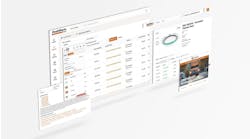June is National Safety Month and the start of summer, but safety is a year-round concern. Pre-trip inspections of certain truck parts will reduce the chance of unexpected downtime this summer. Keep reading to learn the good, the bad, and the ugly side of summer with recommended truck parts to focus on to ensure a safe and smooth ride.
Summertime events
The summer months aren’t all about fireworks, swimming, and hotdog eating contests. First, we discuss the good side of summer. The days will be longer, the nights will be shorter. Now, the bad side of summer. As you know, summertime can be stifling hot. This factor can potentially lead to trouble down the road for drivers and make for an unpleasant ride. Finally, the ugly side of summer begins in June with Hurricane Season in the Atlantic when dangerous storms threaten areas along the East Coast and Gulf of Mexico until late November. Because the storms will bring overcast skies, powerful winds, and heavy rain, visibility while driving may be a challenge. To make matters worse, the highways are flooded with tourists who will drive like there is no tomorrow swerving through lanes and cutting off trucks. Yes, summertime is a tough season for drivers; but all will be okay if drivers act now to inspect and repair certain truck parts.
Replace headlights
We didn’t want to overwhelm you, but in addition to worrying about tropical storms and hurricanes, truckers will observe new additions to deer herds as deer birthing season resumes in June. Bambi is certainly adorable—that is until he makes a run for it in front of your truck. Because of the storms and roaming wildlife, we recommend inspecting headlights and make upgrades if needed. The most popular lights on the market are LED and halogen; and one type isn’t necessarily better than the other.
See also: Maintenance strategies for commercial vehicle lighting
LED lights offer vibrant blue-white optics that allow for a wider scope of landscapes compared to halogen lights. This is desirable to truckers who want a side-by-side view of objects around them including road signs and fleeing wild animals. While these lights are luminous, they can be an eyesore for passing vehicles. Halogen lights, on the other hand, offer a gentle white-yellow tint that are like incandescent lights. Halogens offer a clear scope in front of vehicles but have a limited range of side views. Nevertheless, these lights last approximately 500 hours and are more energy efficient than LEDs.
Inspect HVAC parts
It is not uncommon practice to blast the air conditioning upon starting the engine; but if you start to hear rattling and squeaking noises, smell odd odors, and are not getting cold air circulation, chances are A/C parts like condensers, evaporators, and compressors are failing. Be sure to check sensor systems, switches, valves, hoses, and O-rings for leaks as these are common reasons for failing A/C systems. Sure, you could drive with broken A/C; but who wants to do that when it’s 95 degrees F outside?
Install ADAS technologies
Advance Driver Assistance Systems (ADAS) technologies started in 1948 with the invention of modern-day cruise control and has since grown in advancement for heavy-duty trucks. The four main types of ADAS technologies—Adaptive, Automated, Monitoring, and Warning—were designed to decrease crashes and reduce human errors.
See also: ADAS service strategies
Samsara offers great examples of the different types of ADAS technologies on their website:
- Adaptive ADAS help vehicles make small adjustments based on the environment around them. Adaptive Cruise Control (ACC) acknowledges driver speeds and adjusts the truck’s speed accordingly to maintain a safe distance.
- Automated ADAS takes control in emergency situations. Automatic braking alerts and capabilities is an example of this type of ADAS technology.
- Monitoring ADAS is a surveillance system done through cameras and/or sensors. Think blind spot view mirrors and safe exit assist sensors as an example.
- Warning ADAS are automated technologies that offer real time alerts that measure speed, distance, angle, and other safety variables among vehicles. These warning systems let drivers know with an audio alert that danger is near, giving the driver time to change his or her driving style. Lane-Departure is a popular type of warning system.
In 2019, 36,096 people died in crashes linked to human error, according to NHTSA. ADAS technologies hold the potential to reduce the number of fatalities each year.
Check suspension
The bitter cold of winter wreaked havoc on streets and highways which led to potholes in the spring. These dips in the road are becoming more noticeable as we enter summer and are only worsening due to the rise in traffic. Now is a good time to check on suspension systems and see if shock absorbers need replacement. Performing a “bounce test” lets drivers know if shocks are wearing out. If the vehicle bounces more than two bounces, then it’s time for a replacement. Driving with new shocks will help decrease road vibrations and bumpy rides.
See also: The impacts of suspension maintenance
Install cameras
If a vehicle is within 30 feet of a moving truck, chances are the truck driver cannot see the nearby vehicle. Therefore, it is important to consider mounting cameras for blind spot coverage. Cameras can provide insight into what happened at the scene of an accident. According to JIT Truck Parts, black-and-white or colored camera systems come in several sizes; are waterproof; run on 12DVC of power; and may include integrated heating features to tackle cold weather operation. Side and rear cameras will be helpful at loading docks, too.
Check mirrors
It’s easy enough to shrug off mirror replacement; but there are advances in mirrors that are beneficial to drivers. First off, there are several different kinds of mirrors ranging from folding mirrors and towing mirrors to blind spot mirrors, each one working towards a common goal: Help the driver visualize his or her surroundings. Some mirrors include heating features that are appreciated in the winter months to melt away snow while others contain built-in lights to help better see objects. Before purchasing a new truck mirror, assess what features are most important to you and whether your current mirrors have minor or major damage.
Final thought
NHTSA reports over 4,000 fatalities and 400,000 police-reported crashes each year involving heavy-duty vehicles. Drivers can help reduce the chances of traffic accidents by acting on vehicle maintenance now to ensure safety on the road this summer.
For any part repairs or replacements, be sure to refer to the specific part’s installation instructions, and the truck operator’s manual, for more information and safety requirements.
Jennifer Smith is an e-Commerce Digital Content Strategist with JIT Truck Parts in Highland Park, Illinois. JIT Truck Parts is a national aftermarket truck parts distributor servicing national, regional, and local fleets.




